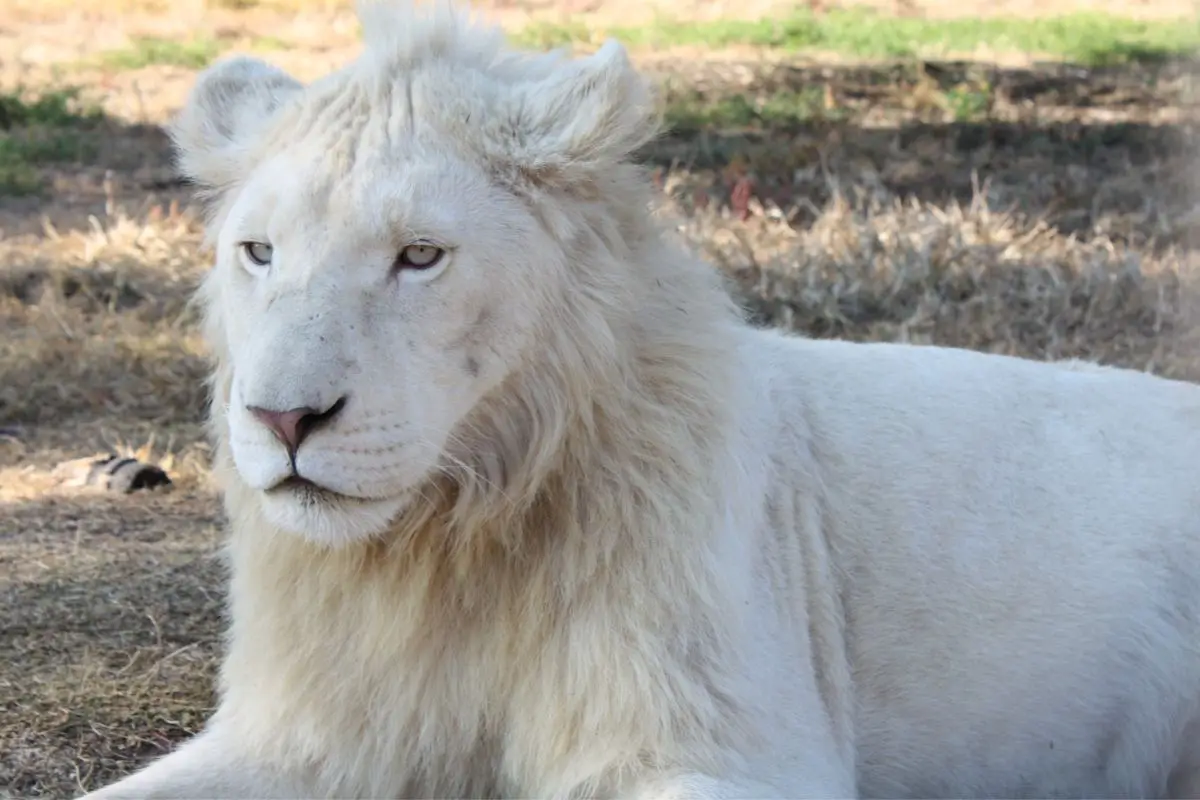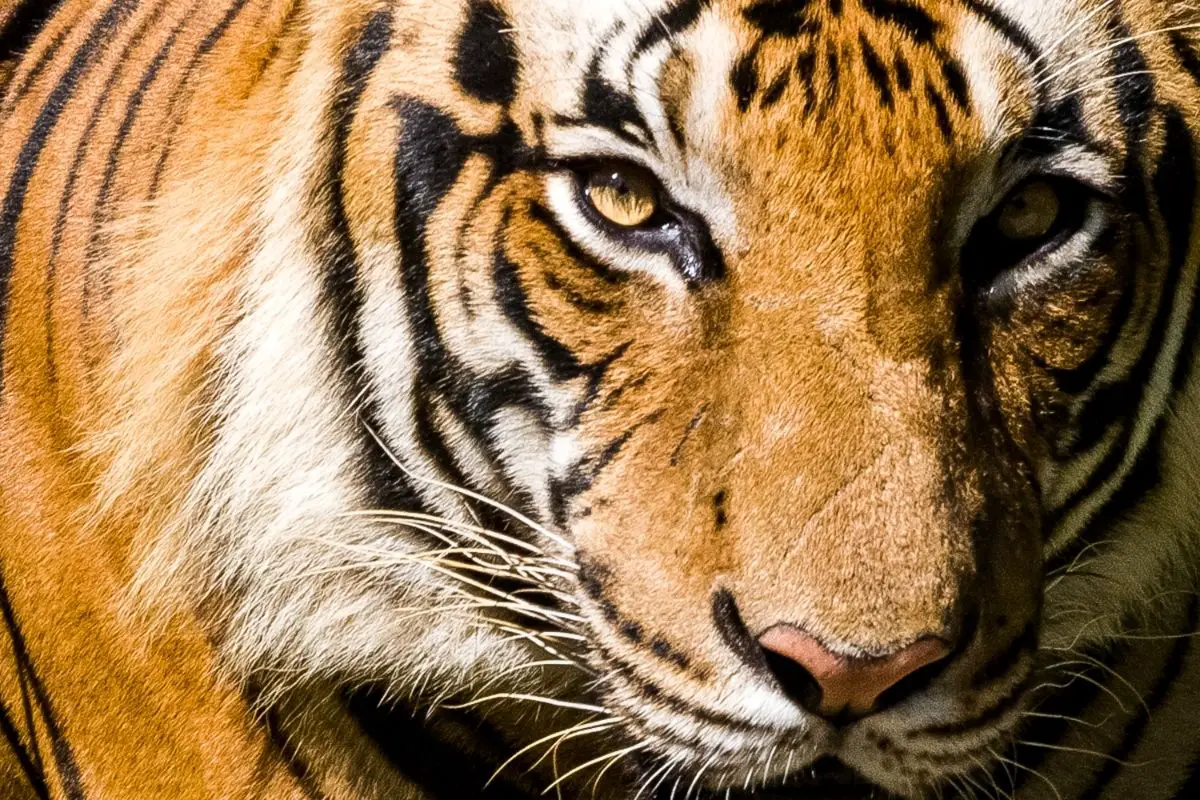White tigers captivate our imagination like few other animals can. With their striking white coats adorned with bold black stripes and piercing blue eyes, these magnificent big cats seem almost mythical. But what’s the real story behind white tigers? Are they a separate species? Can they survive in the wild? And why are they so controversial in conservation circles?
If you’re fascinated by these incredible creatures and want to learn the truth about white tigers, everything you need to know is covered in this comprehensive guide. We’ll explore their genetics, debunk common myths, and reveal why these beautiful cats have become one of the most debated topics in wildlife conservation.
What Are White Tigers? The Genetic Reality
White tigers are not a separate species or subspecies—they are Bengal tigers with a rare genetic mutation that affects their pigmentation. This condition, called leucism, occurs when both parents carry a recessive gene that reduces the production of orange pigment in their fur.
Unlike albinism, which causes a complete absence of pigment, leucism allows white tigers to retain their distinctive black stripes and brilliant blue eyes. Their nose is rose-pink, and their paw pads match this coloring, creating a striking contrast against their snowy white coat.
The genetic mutation that creates white tigers occurs naturally in wild Bengal tiger populations at a rate of approximately 1 in 10,000 births. However, the last confirmed white tiger in the wild was shot in 1958 in India, and today, all white tigers exist only in captivity.
Common Misconceptions About White Tigers
Many people believe white tigers are:
- A separate species – False: They’re Bengal tigers with a color mutation
- Albino – False: They have leucism, not albinism
- Snow leopards or clouded leopards – False: These are completely different species
- Naturally occurring in many locations – False: The white gene mutation originated specifically in Bengal tigers from India
- Thriving in the wild – False: Their white coloration makes survival extremely difficult
Physical Characteristics and Unique Features
White tigers possess all the physical prowess of their orange counterparts, with some notable differences that make them truly distinctive among big cats—much like how Siberian tigers have their own unique characteristics.
Adult white tigers typically measure 9-10 feet in length (including their tail) and weigh between 400-500 pounds for males, with females being somewhat smaller. They tend to grow faster and become heavier than orange Bengal tigers, often displaying more muscular builds throughout their lives.
Distinctive Physical Features
The most striking features of white tigers include:
- Coat: Pure white with black stripes that are as unique as fingerprints
- Eyes: Brilliant blue instead of the golden or green eyes of orange tigers
- Nose and paws: Rose-pink coloring
- Size: Often larger and more muscular than their orange relatives
- Stripes: The striped pattern exists in their skin, not just their fur
Interestingly, white tigers are known to be more sedentary than other big cats, sleeping an average of 16-18 hours per day. This behavior, combined with their striking appearance, makes them popular attractions in captivity, though it raises important conservation questions.
The Controversial Truth About White Tiger Breeding
The reality of how white tigers exist today is one of the most controversial aspects of their story. Since the white coloration requires both parents to carry the recessive gene, breeding programs have resorted to inbreeding to maintain the white trait.
All current captive white tigers can trace their lineage back to a single male named Mohan, who was captured in India in 1951. This extremely limited gene pool has led to serious health consequences that wildlife experts and ethical conservationists find deeply troubling.
Health Problems Associated with Inbreeding
The intensive inbreeding required to produce white tigers has resulted in numerous health issues:
- High mortality rate: Over 80% of white tiger cubs die before reaching adulthood
- Physical deformities: Crossed eyes (strabismus), cleft palates, and spinal problems
- Internal issues: Kidney problems, immune system deficiencies, and shortened lifespans
- Neurological problems: Learning difficulties and behavioral abnormalities
According to the World Wildlife Fund, these breeding practices divert resources and attention away from conserving wild tiger populations, which face genuine threats to their survival.
White Tiger Habitat and Lifestyle
In their natural state, white tigers would have inhabited the same environments as Bengal tigers: the tropical forests, grasslands, and mangrove swamps of the Indian subcontinent. However, their distinctive white coloration presents significant challenges for survival in these habitats.
Why White Tigers Struggle in the Wild
The beautiful white coat that makes these tigers so captivating also seals their fate in natural environments:
- Poor camouflage: Their white coloring makes them highly visible to prey, reducing hunting success
- Increased vulnerability: They’re more easily spotted by potential threats
- Reduced fitness: Health problems from inbreeding would further compromise survival abilities
Today, white tigers exist exclusively in captivity across zoos, sanctuaries, and unfortunately, some private facilities worldwide. Approximately 200+ white tigers currently live in captive facilities globally, with major populations in the United States, Europe, and Asia.
Diet and Hunting Behavior
White tigers maintain the same carnivorous diet as all tigers, requiring substantial amounts of meat to sustain their large bodies. In captivity, they typically consume:
- 15-20 pounds of meat daily
- Beef, chicken, and occasionally horse meat
- Vitamin supplements to ensure proper nutrition
- Access to fresh water at all times
Their hunting instincts remain intact, and they possess the same incredible abilities as other big cats—reaching speeds up to 35 mph, with powerful jaws capable of delivering a bite force of over 1,000 PSI. These capabilities make them formidable predators, similar to other large cats like those discussed in our mountain lion size comparison, though each species has adapted differently to their respective environments.
Reproduction and Life Cycle
White tigers follow the same reproductive patterns as other tigers, though their breeding in captivity is carefully managed—and often controversial. Understanding their life cycle helps explain both their appeal and the ethical concerns surrounding their existence.
Breeding and Development
Female white tigers reach sexual maturity around 3-4 years of age, while males mature slightly later. The breeding process involves:
- Gestation period: Approximately 3.5 months
- Litter size: 2-4 cubs on average
- Birth weight: Cubs are born weighing about 2 pounds
- Dependency period: Cubs remain with their mother for 18-24 months
- Lifespan in captivity: 12-20 years (often shorter due to health issues)
The challenge with white tiger breeding is that to guarantee white offspring, facilities often breed closely related tigers, perpetuating the health problems discussed earlier. This practice has drawn criticism from conservation organizations worldwide.
Conservation Concerns and Ethical Debates
The existence of white tigers in captivity raises significant questions about conservation priorities and animal welfare. While these magnificent cats continue to draw visitors and generate revenue for facilities, conservation experts argue that resources would be better spent protecting wild tiger populations.
The Conservation Reality
Wild tiger populations face genuine threats that require immediate attention:
- Habitat loss: Deforestation and human encroachment continue to shrink tiger territories
- Poaching: Illegal hunting for body parts used in traditional medicine
- Human-tiger conflict: As habitats shrink, conflicts with local communities increase
- Climate change: Shifting weather patterns affect prey availability and habitat suitability
The Panthera Foundation emphasizes that while white tigers capture public attention, this fascination should be redirected toward protecting the approximately 4,500 wild tigers remaining across Asia.
Ethical Considerations for Wildlife Enthusiasts
If you’re interested in supporting tiger conservation, consider these approaches:
- Support wild tiger conservation: Donate to organizations working to protect natural habitats
- Choose ethical wildlife experiences: Visit accredited facilities that prioritize conservation over entertainment
- Educate others: Share accurate information about white tigers and conservation needs
- Avoid supporting problematic facilities: Research before visiting places that house white tigers
Where to See White Tigers Responsibly
While the ethics of white tiger breeding remain controversial, some accredited facilities house these animals and provide educational opportunities. When choosing where to observe white tigers, prioritize institutions that:
- Focus on education about genetics and conservation
- Support wild tiger conservation efforts
- Maintain high welfare standards
- Provide transparent information about their animals’ origins
Many wildlife enthusiasts find it valuable to learn about different big cat species and their unique characteristics, from white tigers to the various cats discussed in our articles about what panthers eat and comparisons like jaguar vs mountain lion differences.
The Future of White Tigers
As we look toward the future, the conversation around white tigers continues to evolve. Many progressive zoos and wildlife facilities are moving away from breeding white tigers, instead focusing their resources on species conservation programs that benefit wild populations.
Educational approaches are shifting to help visitors understand the genetic reality behind white tigers while highlighting the urgent need to protect wild Bengal tigers and their habitats. This evolution in thinking represents a positive step toward more ethical wildlife conservation practices.
What You Can Do
Understanding white tigers and everything you need to know about them empowers you to make informed decisions and support meaningful conservation efforts:
- Share accurate information to help others understand the reality behind white tigers
- Support organizations working to protect wild tiger habitats
- Choose wildlife experiences that prioritize conservation over entertainment
- Advocate for better standards in captive animal care and breeding practices
Conclusion: Beauty, Controversy, and Conservation
White tigers represent one of nature’s most striking examples of genetic variation, yet their story is complex and often misunderstood. While their beauty is undeniable, the reality of how they exist today—through intensive inbreeding programs that often prioritize appearance over animal welfare—raises important ethical questions.
As we continue to be captivated by these magnificent cats, we must also advocate for the protection of their wild relatives and support conservation efforts that address real threats to tiger populations. The future of all tigers, whether orange or white, depends on our commitment to preserving their natural habitats and addressing the challenges they face in the wild.
By understanding the complete picture of white tigers—their genetics, their challenges, and the conservation issues surrounding them—we can make more informed decisions about how to support these incredible big cats and their wild counterparts. Whether you’re interested in learning about different big cat species comparisons or diving deeper into tiger conservation, knowledge empowers us to be better advocates for wildlife preservation.
The story of white tigers serves as a powerful reminder that conservation is complex, and our fascination with wildlife should always be balanced with respect for animal welfare and the preservation of wild populations for future generations.
- Bengal Cat vs Wild Bengal Tiger: Complete Comparison 2025 - October 31, 2025
- Complete Wild Cat Spotting Guide for Hikers 2025 - October 31, 2025
- Lynx vs Bobcat: Complete Field Identification Guide 2025 - October 30, 2025







